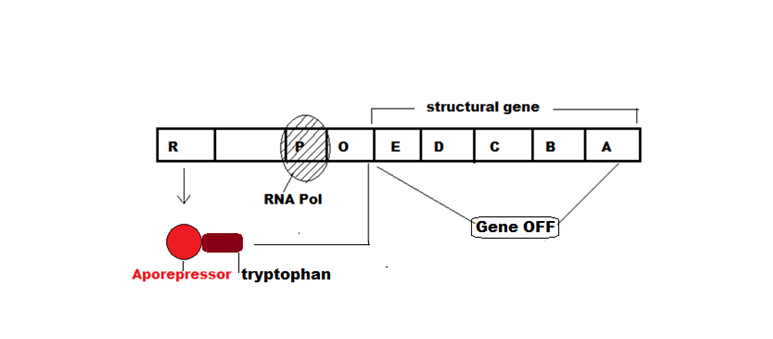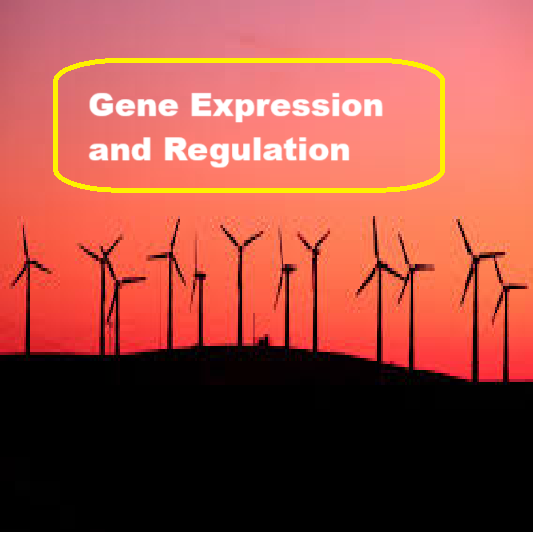It is quite interesting to know as to how gene, a string of DNA present in the nucleus know when and where it should express. How do genes manufacture different proteins required for various physio-chemical processes? How do cells from different organs know which protein to manufacture? Well, the answer to all these questions lies in the study of gene expression. The article below will answer to all these questions in a very simplistic manner.
Q. What is gene expression?
A. It is a mechanism at the molecular level by which the gene expresses itself in the phenotype of an organism. Another name of the gene is called CISTRON. Gene is a segment of DNA that through transcription and translation forms a polypeptide. This process is called gene expression. However, gene expression can be regulated, which can be defined as: the control over the functioning of genes is known as gene regulation.
Q. At what levels, genes can be regulated in eukaryotes?
Ans
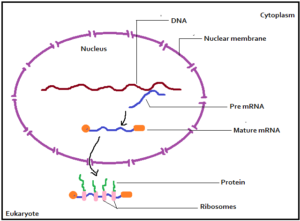
- At the transcriptional level
- RNA processing level
- Transfer of RNA from nucleus to cytoplasm
- Translational level
Gene expression in prokaryotes is regulated at the transcriptional and translational level.
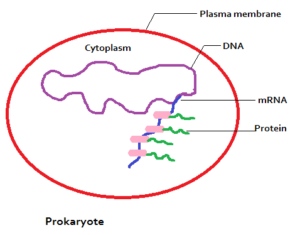
Operon Concept for Regulation of Gene Expression
Operon concept was given by Jacob and Monad in E. coli. Operon is a segment of DNA (part of the genetic material), which acts as a single regulated unit. The regulated unit possesses:
- Structural gene
- Operator gene
- Promoter gene
- Regulator gene
LAC OPERON CONCEPT
This operon is associated with the metabolism of lactose. In other words, it is associated with the breakdown of lactose (catabolism). The products of the lac operon are involved in the catalytic reactions.

Structural gene: It can be 1 or more than 1 in an operon. These genes are involved in the formation of proteins. These proteins/enzymes are involved in controlling the metabolism of the cytoplasm of the cell. In Lac Operon, three structural genes Z, Y and A are present. When these genes undergo transcription and form a messanger RNA. Only one messanger RNA is formed for these three different genes. Since, genes are called cistron, in this case, it is called POLYCISTRONIC CONDITION. The messanger RNA will translate to form proteins. Three different types of proteins would form and they would be enzymatic in nature.
Gene 1 = Z will form enzyme 1 = beta galactosidase. It is involved in the breakdown of lactose to form glucose and galactose. In other words, this enzyme is breaking complex substrate to simpler one i.e., disaccharide to monosaccharide. These simple compounds would enter into the respiratory system to form ATP. This energy is utilized by bacteria for different metabolic activities.
Gene 2 = Y will form enzyme 2 = Permease – it is a membrane based enzyme. It is involved in taking up the lactose present in the environment / media. In other words, it is involved in the uptake of lactose in the E. coli cell.
Gene 3 = A will form enzyme 3 = Transacetylase. When lactose uptake takes places in the E. coli cell from the surrounding, some toxins also enter into the cell. The breakdown of these toxins is important and that is performed by this enzyme.
These three genes can be switched off or switched on depending upon the cellular requirements. In other words, these genes are not always expressing themselves. Such types of genes are called NON CONSTITUTIVE GENES or LUXURY GENES.
OPERATOR GENE (O): this gene is not involved in the formation of any polypeptide. In other words, the self expression of this gene is absent. However, operator gene is involved in controlling the functioning of the structural genes i.e., the synthesis of mRNA by ZYA genes. The operator gene can be blocked by the chemical called REPRESSOR protein. This repressor is formed by i gene.
PROMOTER GENE (P): The self expression of this gene is absent. It is the binding site for RNA polymerase.
I gene / INHIBITOR GENE / REGULATOR GENE: this gene continuously is expressing in the cell. Genes which are always ON are called CONSTITUTIVE GENES OR HOUSEKEEPING GENES. This gene after transcription results in the formation of mRNA. And after translation, protein would form which is called REPRESSOR PROTEIN. This gene is MONOCISTRONIC in nature.
Note: In prokaryotes, both MONOCISTRONIC and POLYCISTRONIC conditions are present, but the latter is more common. In eukaryotes also both the conditions are present, but MONOCISTRONIC condition is more common.
Q. How the structural genes are switched on and off depending upon the requirements?
Ans.
CASE 1: LACTOSE IS ABSENT IN THE CELL
When the food (lactose) is absent in the cell – it means, there is no requirement for the enzymes to metabolize the food. It means, the transcription of the structural genes should be stopped. The I gene that has formed the repressor protein binds with the operator. Due to the binding of the repressor protein, the RNA polymerase attached to the promoter will not be able to move to transcribe the genes. In other words, the operon will be switched off. Switching off of OPERON by the product of regulator gene is called NEGATIVE CONTROL OF LAC OPERON.
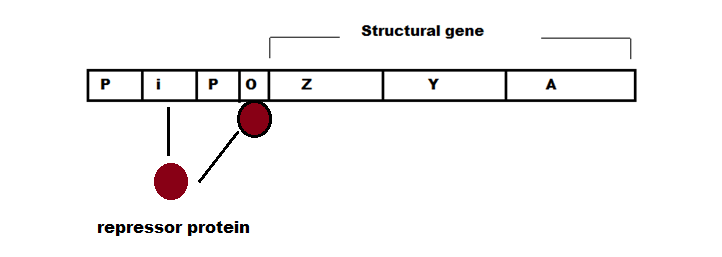
CASE 2: LACTOSE IS PRESENT IN THE CELL
When lactose is present in the cell, it means, glucose is low in the cell. In that case lactose will be broken down by the enzyme produced by the structural genes. It means, when lactose is present in the cell, the structural genes will be expressed meaning the OPERON is SWITCHED ON.
When lactose is present in the cell, the lactose molecule binds with the repressor protein and does not allow the repressor to bind to the operator. When operator is not bound by the repressor, the RNA polymerase will bind to the promoter and slides to the operator and eventually to the structural genes to transcribe them. This operon system is called INDUCIBLE SYSTEM. It is so called because the inducer (lactose / allolactose – modified form of lactose) makes the operon switch on from switch off state.
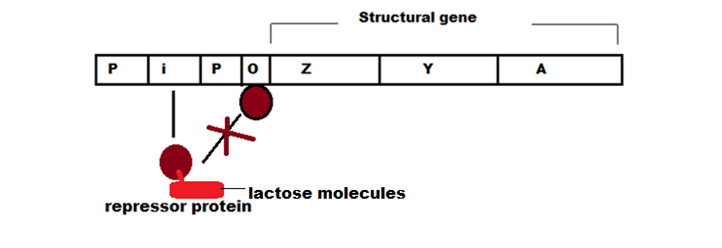
POSITIVE CONTROL OF THE LAC OPERON
- It is done by the chemical CAP (CATABOLITE ACTIVATOR PROTEIN).
- In the cell, there is formation of cyclic AMP (cAMP), it joins with CAP and activates the CAP by forming cAMP-CAP complex. This complex will join at the promoter region. As this complex binds to the promoter region, it activates the binding of the RNA polymerase to the promoter region.

Switching on off the lac operon model with the help of CAP is called POSITIVE CONTROL OF THE LAC OPERON.
TRYPTOPHAN OPERON
The genes present in this operon are involved in the metabolism of tryptophan (synthesis of tryptophan – anabolic in nature).
Structural genes (A, B, C, D, E) – these genes can be switched on or off depending upon the requirement within the cell. Once these genes transcribe, mRNA will form. This single mRNA will be the representative of these 5 genes. After translation, there will be formation of 5 different polypeptides. However, these polypeptides would form only 3 enzymes. The E and D polypeptide will form enzyme 1; the C polypeptide will form enzyme 2; the A and B polypeptides will form enzyme 3. These three enzymes are involved in the formation / synthesis of tryptophan.
Repressor gene: it is a housekeeping gene meaning it is always ON. This gene expresses and forms mRNA and finally repressor protein; however, this repressor protein is inactive when it is formed. It means, it cannot join to the operator by itself. Such a repressor protein is also called as APOREPRESSOR.

CASE 1: TRYPTOPHAN IS ABSENT IN THE CELL
If tryptophan is absent within the cell, it means, tryptophan synthesis needs to be done. This is only possible if the genes ABCDE will be switched on. When tryptophan is absent within the cell, the apo-repressor cannot bind to the operator. The RNA polymerase will join the promoter and then transcribe the genes.

CASE 2: TRYPTOPHAN IS PRESENT IN THE CELL
When tryptophan is present within the cell – it joins with the apo-repressor protein due to which the apo-repressor becomes active repressor. The active repressor can join with the operator to switch off the operon. Once the active repressor joins with the operator, RNA polymerase cannot transcribe the genes and thus we can say the genes are OFF. The tryptophan here acts as a COREPRESSOR.
